The End Rental Arrears to Stop Evictions (ERASE) project was a national effort by the National Low Income Housing Coalition (NLIHC) to ensure that the historic $46.5 billion in emergency rental assistance (ERA) enacted by Congress during the pandemic reached the lowest-income and most marginalized renters for whom it was intended. The project also sought to guarantee that the successes of the pandemic-era ERA program could be used to help develop permanent programs and broaden renter protections.
The ERASE project sought to eliminate rental indebtedness caused by the pandemic and set the stage for permanent solutions to promote housing stability, advance equity, and prevent evictions over the long term by (1) tracking and analyzing emergency rental assistance utilization; (2) documenting and sharing best practices and toolkits; (3) influencing and shaping program design at the federal, state, and local levels; (4) developing key partnerships for outreach and education; and (5) assessing remaining needs to inform advocacy for long-term investments and tenant protections to end housing instability and homelessness in the United States.
Early demographic data show that our collective effort to ensure emergency rental assistance reached those households most in need was successful. Two-thirds of households receiving assistance had extremely low incomes, while 43% of households receiving ERA identified as Black and 20% identified as Latino(a). Research indicates that the unprecedented investment in rental assistance, coupled with new local, state, and federal tenant protections, prevented millions of renter households from being evicted. Research from Princeton University’s Eviction Lab meanwhile finds that government interventions resulted in the prevention of approximately 1.36 million evictions in 2021.
Listed below are some of the reports and other products released by the ERASE project.
![]()
End Rental Arrears to Stop Evictions (ERASE): History, Successes, and Highlights
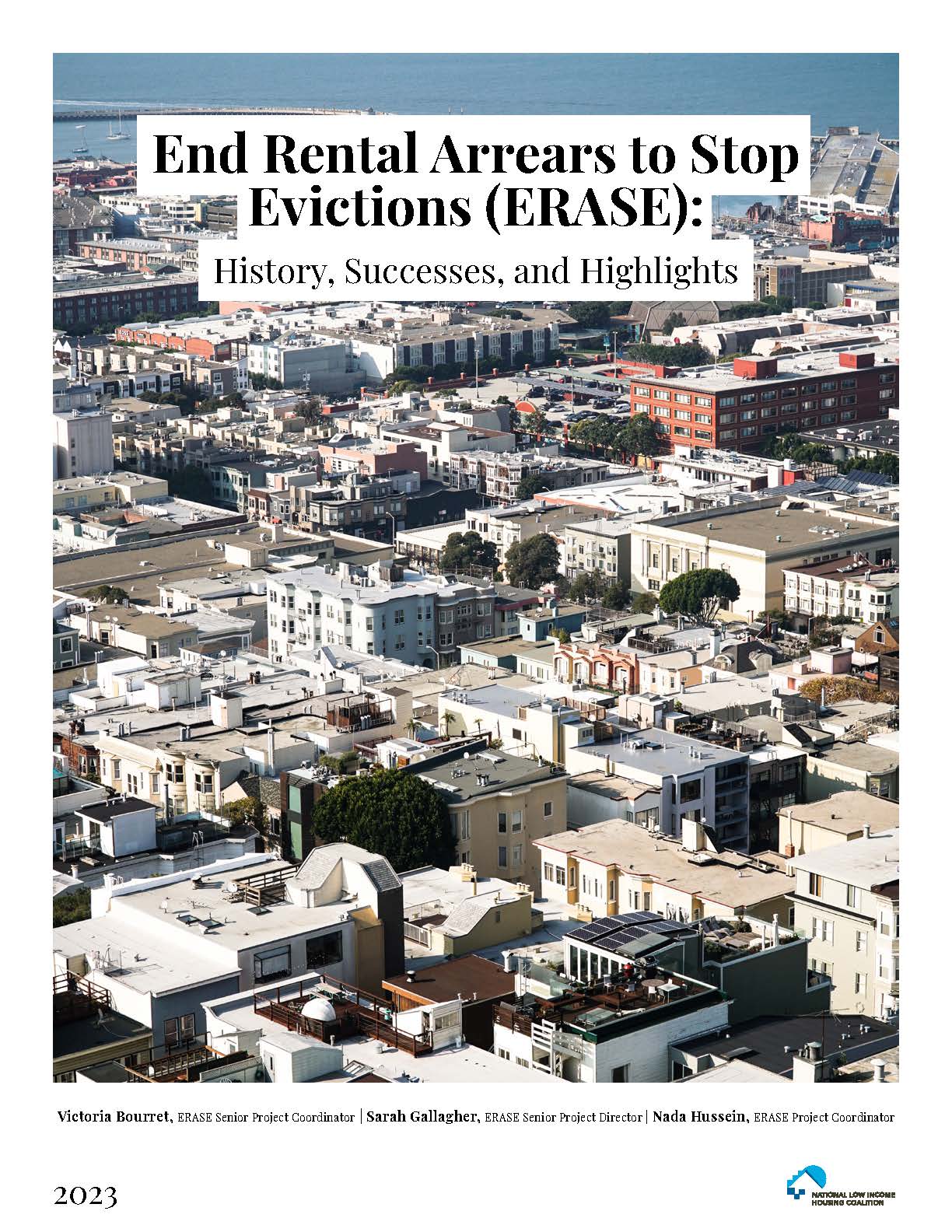
This brief recounts the origin of NLIHC’s ERASE project, which formally concluded in 2023. The report explains the project’s aims and structure, surveys the achievements of the ERASE team, and details the successes of ERASE cohort members.
Beyond Housing Stability: Understanding Tenant and Landlord Experiences and the Impact of ERA
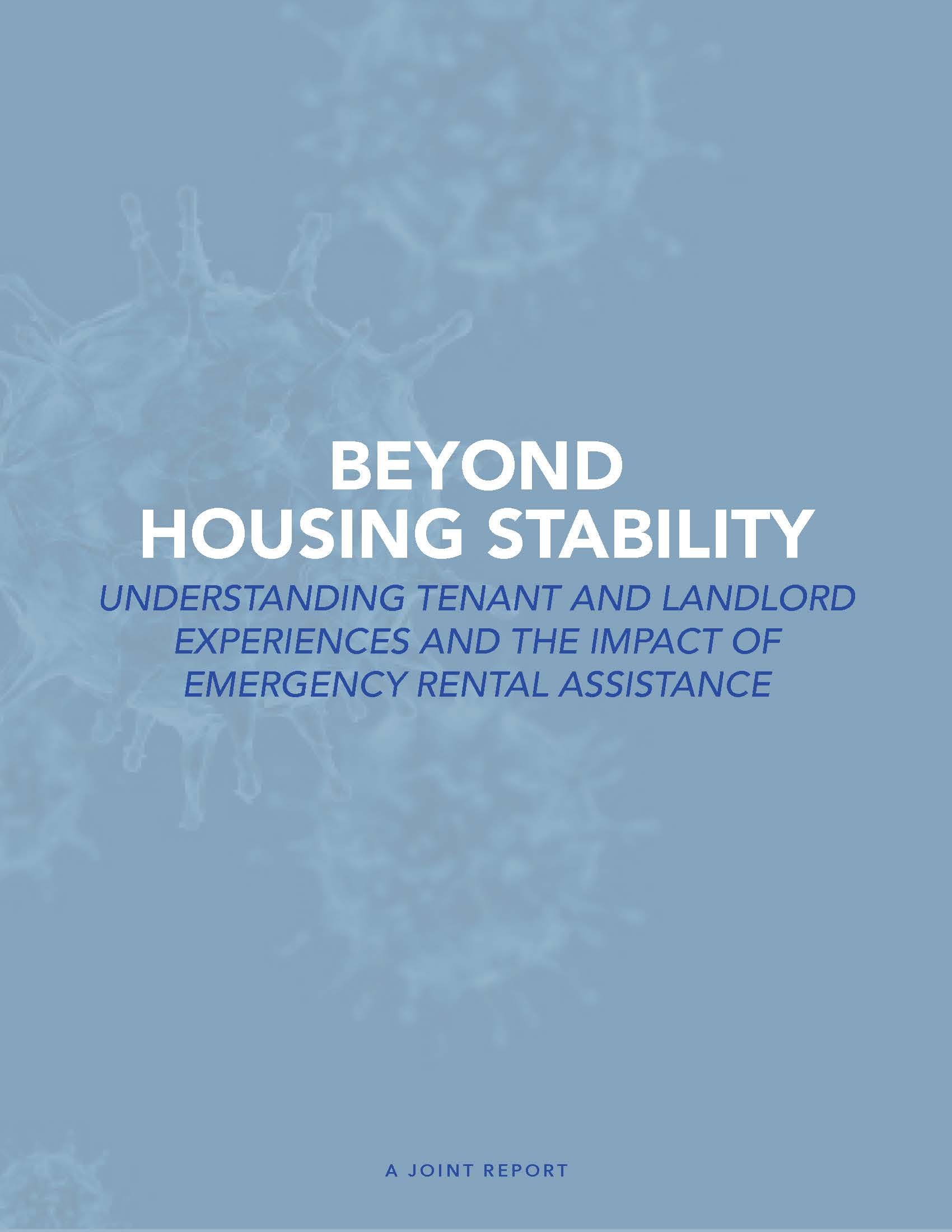
NLIHC, the Housing Initiative at Penn (HIP), and the Reinvestment Fund (RF) released a joint report on tenant and landlord experiences with the U.S. Department of the Treasury’s (Treasury) Emergency Rental Assistance (ERA) Program.
Emergency Rental Assistance: The Path to a Permanent Program
This document provides a summary of the 2021/2022 ERASE cohort projects and the impact of the ERASE Cohort on emergency rental assistance implementation.
ERASE Assessment
This ERASE Assessment provides a survey designed to help understand the features of each ERA program. The assessment offers a helpful guide for program improvement plans, local system change efforts, and tracking progress in ERA implementation over time.
Emergency Rental Assistance: Blueprint Supplemental
This document shares stories about how the Emergency Rental Assistance (ERA) program benefited the lowest-income renters around the country. Provided by members of NLIHC’s 2021/2022 ERASE Cohort, the stories highlight tenant and landlord experiences with ERA that align with important takeaways from the ERASE project’s 2022 report Emergency Rental Assistance: A Blueprint for a Permanent Program.
Emergency Rental Assistance: A Blueprint for A Permanent Program
This report examines the implementation of Treasury's Emergency Rental Assistance (ERA) program by state and local organizations in order to identify policies and practices that led to successful implementation and provide recommendations for model programs. By offering a compendium of research, innovative tools, and shared experiences in the implementation of ERA, the report aims to provide a blueprint that could be used to establish a permanent ERA program in the future.
Extending the Reach of Emergency Rental Assistance
This report explored how the Coronavirus State and Local Fiscal Recovery Funds (SLFRF), HOME Investment Partnerships-American Rescue Plan (HOME-ARP), and Community Development Block Grants-Coronavirus (CDBG-CV) programs – could be used to bridge the gap between Treasury's Emergency Rental Assistance (ERA) program and the provision of longer-term rental assistance.
ERASE Checklist
The ERASE Checklists are designed to help program administrators quickly assess whether their emergency rental assistance programs are visible, accessible, and preventive and to offer strategies for program design and implementation, partnership development, and course correction.
For more information, contact Sarah Gallagher at [email protected].

 Click here to view an interactive PDF of the report.
Click here to view an interactive PDF of the report._page-0001.jpg)
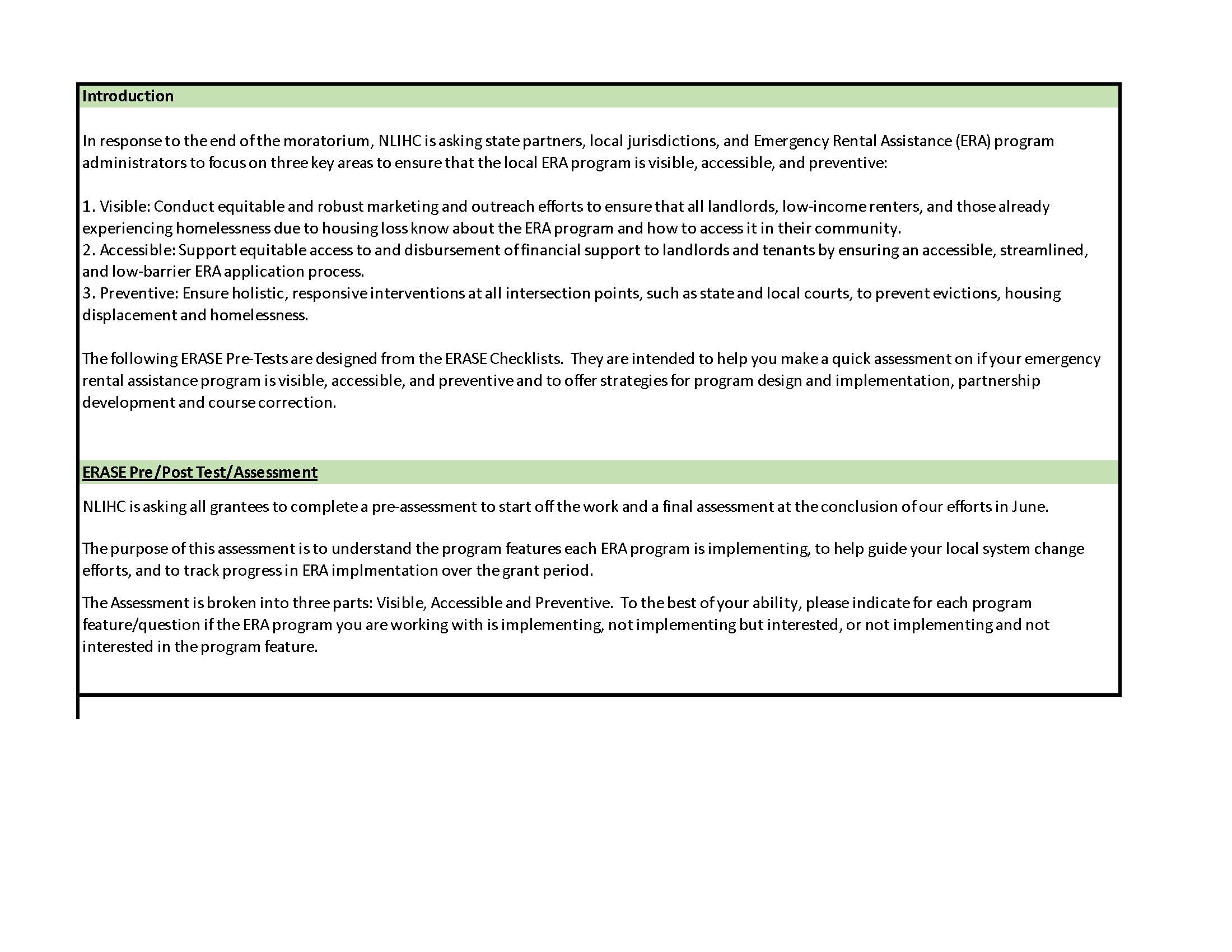
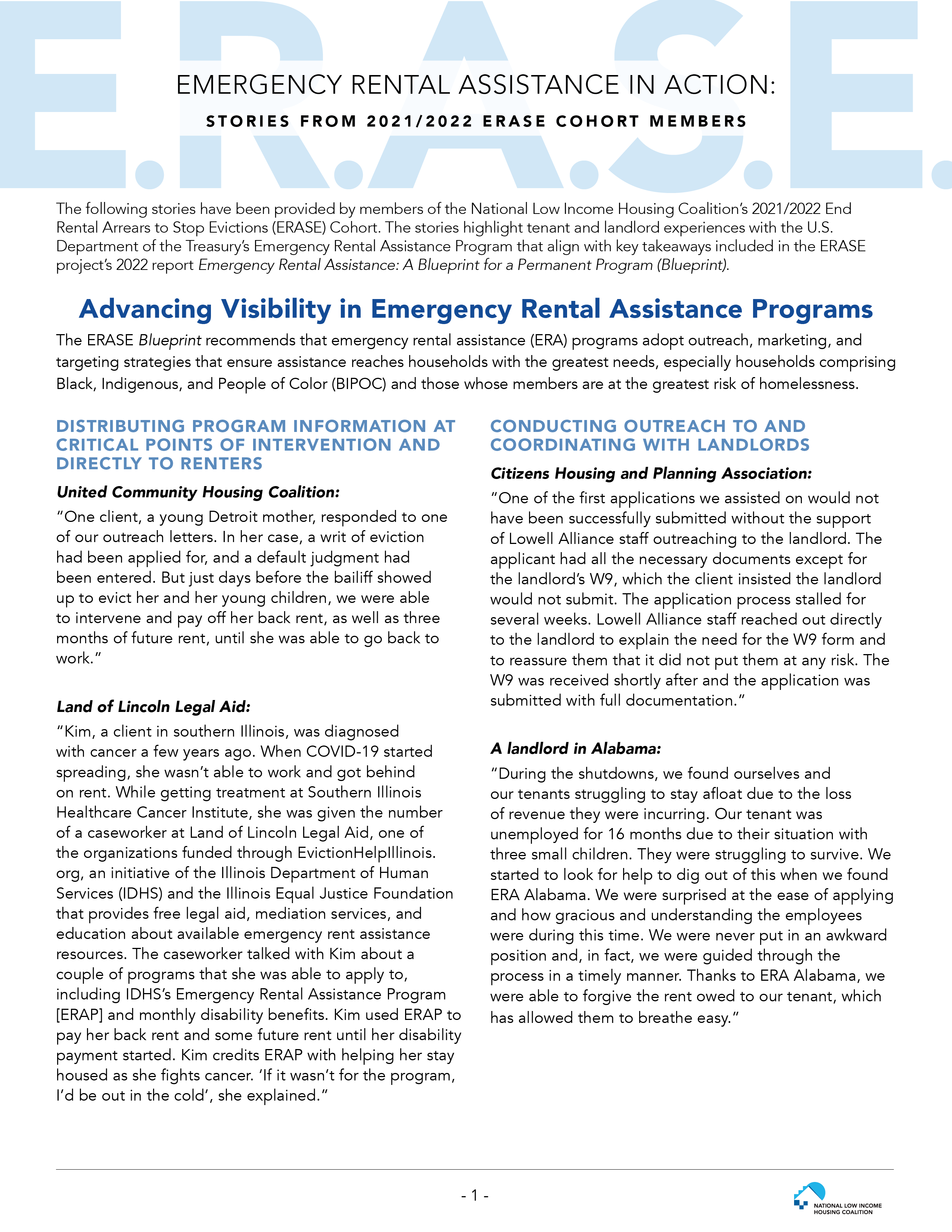
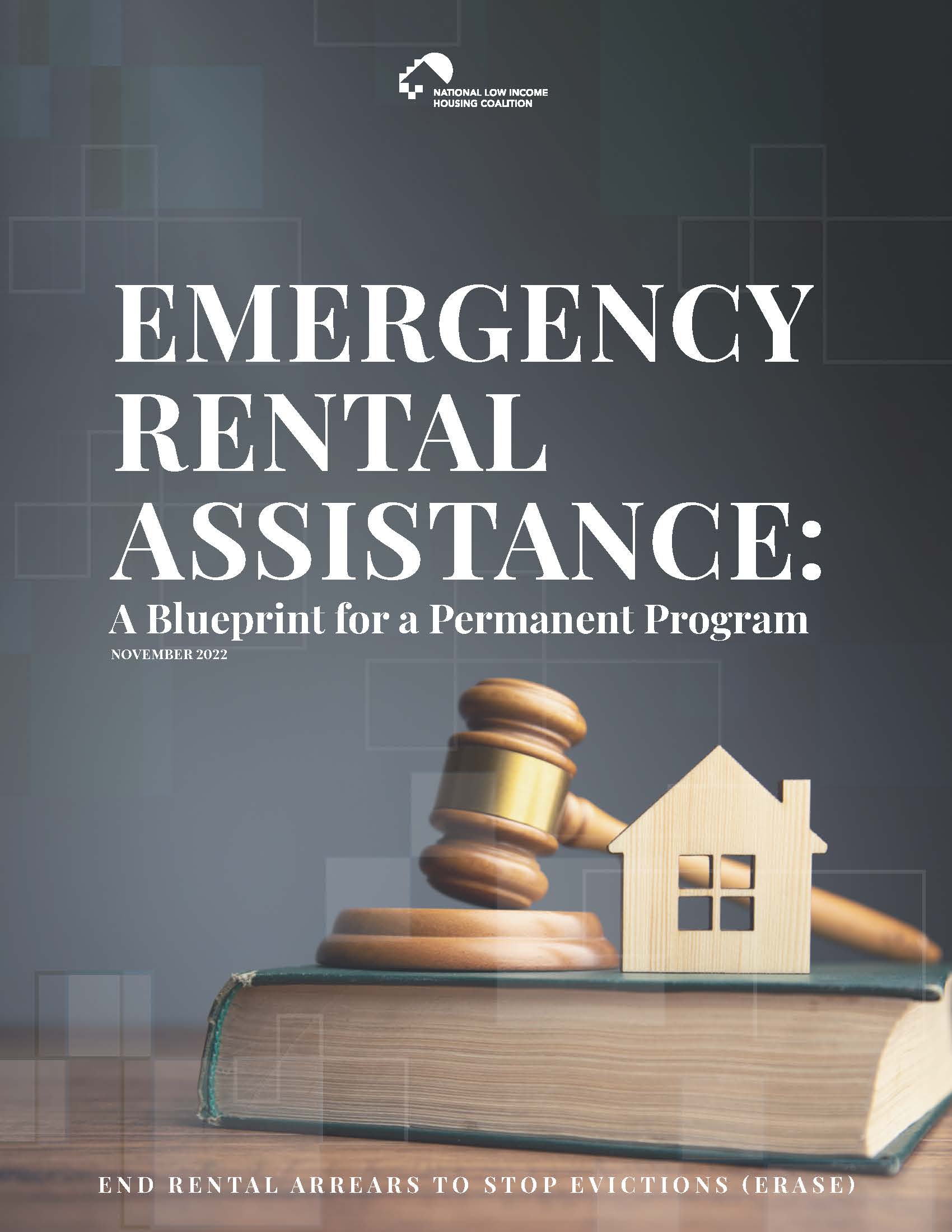
_page-0001.jpg)
.jpg)